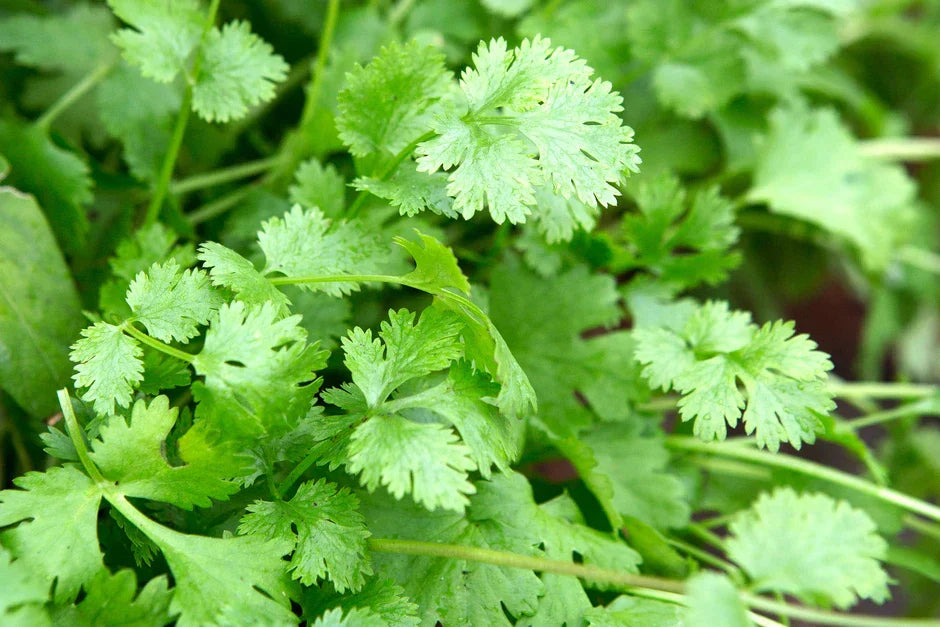
How to Grow Coriander from Seed
Coriander (Coriandrum sativum) is a versatile herb prized for its fragrant leaves and seeds. Popular in a wide range of cuisines, from Indian curries to Mediterranean salads, coriander brings a fresh, citrusy note to many dishes. Although it prefers warm weather, coriander can be grown successfully in the UK with a bit of care and attention. This guide will cover every stage, from soil preparation to harvest, ensuring a productive coriander crop.
Introduction to Coriander
Coriander is an annual herb that grows quickly and is best sown directly where it is to grow, as it dislikes being transplanted. Both the leaves (often referred to as cilantro in some regions) and seeds are edible, making it an incredibly useful herb in the kitchen. Coriander does have a tendency to bolt (go to seed) in hot or stressful conditions, so learning how to prevent this is key to a longer harvest of leaves.
Choosing the Right Variety
Several coriander varieties are available, each with its own characteristics:
- Cilantro: A standard leaf variety that is quick to grow and suitable for leaf production.
- Confetti: A unique variety with feathery leaves, offering a milder flavour.
- Calypso: Bolt-resistant and known for producing abundant leaves over a longer period.
Bolt-resistant varieties are particularly helpful in the UK’s variable summer climate, as they extend the harvest window before the plant flowers and sets seed.
Preparing the Growing Area
Coriander prefers well-drained, fertile soil and a position that receives at least a few hours of direct sunlight each day.
-
Soil Preparation:
- Loosen the soil to about 20 cm and remove any stones or debris.
- Work in well-rotted compost or manure to improve soil fertility and drainage.
- Aim for a soil pH of around 6.0-7.0.
-
Container Growing:
- Coriander grows well in containers, making it ideal for patios or balconies.
- Choose a pot at least 20 cm deep and use a high-quality multipurpose compost.
Sowing and Planting Coriander
Coriander is best grown from seed sown directly into the ground or container, as it does not respond well to transplanting.
-
When to Sow:
- Sow Coriander seeds from late March to early September, depending on the desired harvest period.
- For a continuous supply, sow seeds every 2-3 weeks throughout the summer.
-
How to Sow:
- Sow seeds about 1-2 cm deep and space them 10-15 cm apart.
- If sowing in rows, keep rows about 30 cm apart for good airflow.
- Water lightly after sowing and keep the soil consistently moist until germination, which usually takes 7-14 days.
-
Indoor Sowing:
- You can start coriander indoors in early spring to get a head start. Sow seeds in small pots on a sunny windowsill, then move outdoors once the weather warms.
Caring for Coriander
Coriander is relatively low-maintenance once established, but it appreciates consistent care.
-
Watering:
- Keep the soil evenly moist, but avoid waterlogging. Dry conditions can cause coriander to bolt.
- Water at the base of the plant, as overhead watering can lead to fungal issues.
-
Feeding:
- Coriander does not require heavy feeding. A balanced, general-purpose fertiliser applied once or twice during the growing season is sufficient.
- Avoid over-fertilising with nitrogen, which can lead to weak, leggy growth.
-
Weeding and Mulching:
- Weed regularly to reduce competition for nutrients and water.
- Apply a thin layer of organic mulch around plants to help retain moisture and maintain more even soil temperatures.
Preventing Bolting
Bolting is when coriander starts to flower and set seed prematurely, often due to heat or water stress. To prevent this:
-
Consistent Moisture:
- Keep the soil evenly moist. Dry spells or sudden changes in water availability can trigger bolting.
-
Partial Shade:
- In hot summers, provide some afternoon shade to keep plants cooler.
-
Succession Planting:
- Rather than relying on one sowing, sow coriander in small batches every few weeks. If one batch bolts, another will be ready to replace it.
Pests and Diseases
Coriander is relatively trouble-free, but keep an eye out for:
-
Aphids:
- These small insects cluster on leaves and stems, sucking sap and weakening the plant.
- Spray them off with water or use an organic insecticidal soap if necessary.
-
Slugs and Snails:
- These can damage young seedlings.
- Protect plants with slug pellets (organic options available), copper tape, or barriers like crushed eggshells.
-
Fungal Issues:
- Ensuring good airflow by not overcrowding plants and watering at the base helps prevent fungal diseases.
Harvesting Coriander
Harvesting regularly encourages the plant to produce more leaves.
-
Leaves:
- Begin harvesting leaves when the plant is about 10-15 cm tall.
- Pinch off the leaves from the outer stems, leaving the inner parts to continue growing.
- Harvest leaves frequently to delay bolting.
-
Seeds:
- If you allow the plant to flower, you can harvest the seeds for use as a spice.
- Wait until the seed heads turn brown, then cut them off and dry them in a paper bag. Rub seeds free from the heads and store in airtight containers.
Storing Coriander
Coriander leaves are best used fresh for maximum flavour, but they can be preserved:
-
Short-Term Storage:
- Place fresh stems in a glass of water and cover loosely with a plastic bag in the fridge.
- Leaves stay fresh for a few days this way.
-
Freezing:
- Chop leaves and freeze them in ice cube trays with a little water or oil.
- Use frozen cubes in soups, stews, and sauces.
-
Drying:
- Drying coriander leaves is possible but reduces flavour significantly. Freezing is the better preservation method.
Frequently Asked Questions
Q: Can I grow coriander indoors year-round?
A: Yes, as long as you provide ample light, ideally a sunny windowsill or a grow light, and maintain even moisture and moderate temperatures.
Q: Why does my coriander taste bitter?
A: Older leaves or leaves from plants that have started to bolt can taste more bitter. Harvest leaves early and frequently to maintain a fresh, mild flavour.
Q: How often should I water coriander?
A: Water whenever the top of the soil starts to dry. In hot or dry conditions, this may mean daily watering for container-grown plants.
Summary and Final Tips
Coriander is a rewarding herb that can elevate many dishes. To summarise:
- Sow seeds directly outdoors from late March, repeating every few weeks for a continuous supply.
- Keep soil evenly moist and provide partial shade in hot weather to prevent bolting.
- Harvest leaves frequently to encourage new growth and maintain flavour.
- Save seeds at the end of the season for use as a spice or for next year’s planting.
For further guidance, consult the Royal Horticultural Society (RHS) website or herb gardening books such as Grow Your Own Herbs by Jekka McVicar. With careful attention, you can enjoy a steady supply of fresh coriander leaves all summer long. Happy growing!
